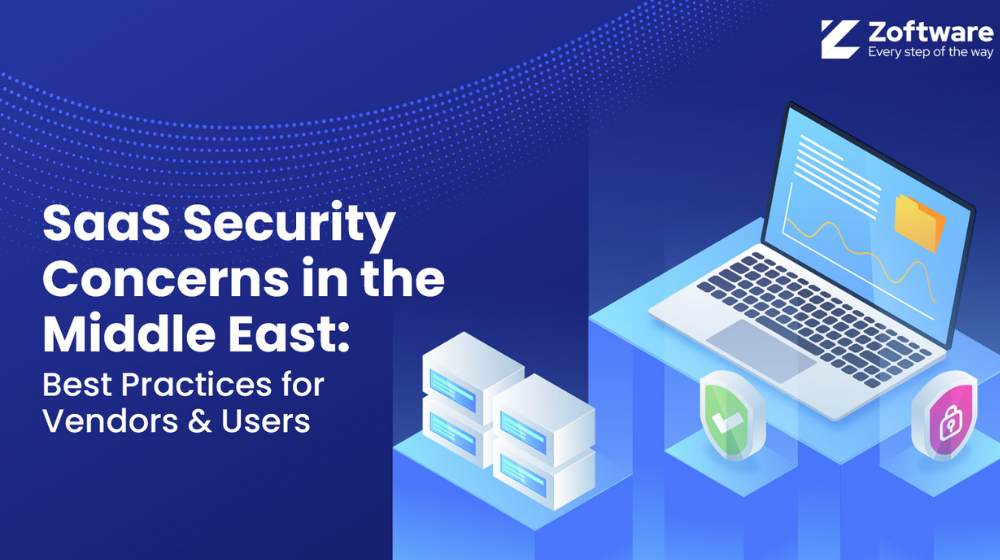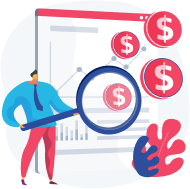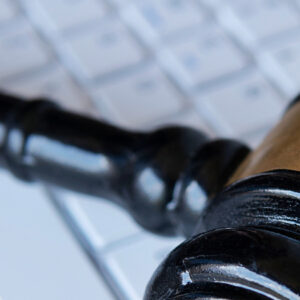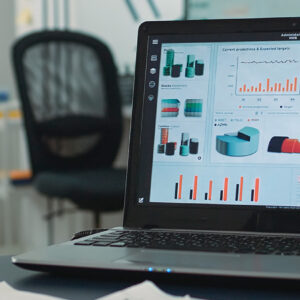Software as a Service (SaaS) is rapidly evolving, and it’s pivotal for businesses to keep up. With more than 30,000 companies charted in the SaaS landscape, the sector isn’t merely expanding; it’s flourishing.
As per recent research, it is projected that 85% of software that organizations use will be SaaS by 2025.
Here are some figures to set the stage: The SaaS market is projected to skyrocket to a staggering $700 billion by 2030, and it’s sprinting there with an annual growth rate of 18.3%. The Middle East and North Africa (MENA) region is at the epicenter of this SaaS boom, as it is the second fastest growing region for SaaS, with a CAGR of 18.2% from 2022 to 2028 and is expected to reach a market size of US$20.67 billion by 2028.
SaaS offers many advantages, like adaptability and flexibility. However, it also brings significant security concerns. However when businesses transfer their customers’ data to external vendors, they are putting their data’s security at risk.
A study found that sensitive data in about 81% of organizations has been exposed in SaaS applications. This highlights the prevalence of data vulnerabilities in SaaS applications and the urgent need for enhanced security measures
Before buying a SaaS application, it is imperative to evaluate the security risks. This will help business-leaders to make informed purchasing decisions.
This article explores the common SaaS security risks associated with SaaS solutions, and it’ll also provide proactive insights on how businesses can address these issues effectively.
Let’s get started!
What Are The SaaS Security Concerns That Businesses Face in the Middle East?
The rise in the use of SaaS (Software as a Service) in the Middle East has brought with it a surge in security concerns. As more businesses adopt SaaS, they must also be aware of the potential risks. Here is how potential SaaS security risks impact your business:
- Data sovereignty
Many organizations in the Middle East are concerned about the security of their data when it is stored in the cloud, especially if the cloud provider is located outside of the region. This is due to the fact that there are different data privacy laws and regulations in different countries, and organizations want to make sure that their data is protected in accordance with the laws of their own country.
- Data breaches
Cloud-based SaaS solutions are vital for many businesses, holding a wealth of sensitive information ranging from customer details to financial insights. However, the significance of SaaS security becomes evident when considering the risks. Without proactive security measures, cybercriminals can exploit this data. A common tactic is phishing, where attackers deceive employees into sharing their SaaS login credentials, granting unauthorized access to invaluable data.
- Compliance violations
If your SaaS applications are not properly configured or managed, you could violate industry regulations or government laws. This could lead to fines, penalties, or other sanctions.
- Shadow IT
Shadow IT is the use of unauthorized cloud-based applications and services by employees. This can pose a security risk because these applications and services may not be subject to the same security controls as the organization’s approved applications. Organizations need to have a policy in place to manage shadow IT and ensure that all cloud-based applications and services are used securely.
- Malware attacks
The digital landscape of SaaS platforms can sometimes be a double-edged sword. While they offer convenience, they can also be gateways for malware, especially through insecure connections or software vulnerabilities. An employee might unintentionally download a malicious file, which can then spread across the network, jeopardizing the SaaS environment. Recognizing the SaaS security significance is crucial to prevent such breaches.
- Phishing attacks
SaaS platforms, due to their reliance on user credentials, are prime targets for phishing schemes. Cyber attackers craft deceptive emails, imitating genuine SaaS providers, to trick employees into revealing their login details. Once these credentials are compromised, the entire SaaS platform and its stored data are at risk. Implementing multi-factor authentication can be a game-changer in such scenarios, adding an extra layer of security.
- DDoS attacks
Being internet-dependent, SaaS applications are vulnerable to DDoS attacks. In these attacks, the application is bombarded with overwhelming traffic, causing disruptions and potential revenue losses. The essence of proactive security measures becomes clear in such situations, ensuring business continuity and safeguarding user trust.
- Insider threats
Sometimes, the danger lurks within. Employees with access to SaaS platforms can inadvertently or intentionally harm its security. This could be through sharing sensitive data or accidentally introducing malware.
A study found that 36% of employees still had access to systems after they left their jobs. This is a major security risk, as it allows unauthorized users to access sensitive data. Access control is therefore crucial for all SaaS applications that contain sensitive data
It’s imperative for businesses to recognize the significance of SaaS security and employ measures like multi-factor authentication to counteract such threats.
By understanding the importance of SaaS security and integrating proactive security measures, businesses can ensure a safer and more reliable digital environment for their operations and clientele.
Let’s move on to the next section to better understand how vendors and users can mitigate security risks in SaaS applications.
11 Best Practices to Mitigate Security Risks in SaaS Applications for Vendors and Users
- Choose A Reputable Saas Provider
Your choice of SaaS provider can make or break your security posture. Opt for providers known for their robust security measures, and those that have undergone third-party audits or possess industry-recognized certifications.
Moreover, when choosing a SaaS provider, do your research and choose a provider that has a good reputation for security. Look for providers that have been certified by a reputable security organization, such as SOC 2 or ISO 27001.
- Implementing Cloud Security Mechanisms
In the age of digital transformation, ensuring robust cloud security is paramount. This involves deploying advanced tools and protocols tailored for cloud environments, such as firewalls and encryption methods, to safeguard data both in transit and at rest.
- Devise an Incident Response Plan
Being prepared is half the battle won. Establish a clear, step-by-step incident response plan that addresses potential security breaches, ensuring swift action and minimal damage.
- Third-Party Securities
With the integration of third-party tools and services, it’s crucial to thoroughly vet all external vendors for their security protocols. Limit their access to only what’s necessary, ensuring that potential vulnerabilities are minimized.
- Compliance Assessment
Stay ahead of the curve by conducting regular compliance assessments. This ensures that your SaaS application aligns with industry security standards and regulations, minimizing potential legal repercussions.
- Staff Training
Empower your team with knowledge. Regular training sessions on the latest security threats and best practices can drastically reduce the risk of breaches caused by human error.
- Implement Strong Access Controls
In an era where cyber threats are ever-evolving, relying solely on passwords is outdated. Implement strong authentication mechanisms like Single Sign-On (SSO) and multi-factor authentication (MFA) to bolster your defenses.
- Encrypt Data
Data is the lifeblood of any organization. Ensure that sensitive data is encrypted both when it’s stored and when it’s being transferred, reducing the risk of unauthorized access.
- Monitor for Threats
Stay vigilant by employing security solutions that continuously monitor for potential threats to your SaaS applications, ensuring timely detection and response.
- Keep Software Up to Date
Cyber threats evolve, and so should your defenses. Regularly update your SaaS applications and any third-party integrations to benefit from the latest security patches and enhancements.
- Have a Disaster Recovery Plan in Place
It’s always great to hope for the best, but it’s also important to be prepared for the worst. Establish a comprehensive disaster recovery plan that outlines the steps to restore your SaaS applications and data in the unfortunate event of a breach or other security incidents.
By adhering to these best practices, organizations can significantly reduce the risks associated with SaaS applications, ensuring a secure and efficient operational environment.
3 Examples Of Saas Security Breaches And Lessons Learned
NASA’s Data Vulnerability Due to Default Settings
Security expert Avinash Jain discovered a single oversight in the JIRA collaboration tool’s settings that potentially exposed data from numerous top-tier companies, including NASA. This vulnerability arose from Jira’s Global Permissions settings. When creating filters and dashboards in JIRA, the default visibility was set to “All users” and “Everyone,” unintentionally making internal data public.
Key Takeaway: Always review default sharing settings in SaaS platforms to prevent unintentional public exposure of sensitive data.
Citrix Faces Attacks Due to Outdated Protocols
Research indicates that 60% of Microsoft Office 365 and G Suite users have faced password attacks via the outdated IMAP protocol. Attackers exploit this older protocol to sidestep Multi-Factor Authentication (MFA) and gain unauthorized access to cloud-based SaaS applications. Interestingly, Citrix, a company specializing in secure federated systems, was among the targets. The FBI believes that attackers initially used password attacks and then bypassed further security layers.
Key Takeaway: It’s crucial to activate MFA across all user accounts and applications, including for administrative roles.
Consent Phishing Risks with OAuth in O365
OAuth, while commonly used, can be a gateway for “consent phishing” attacks. Attackers find it appealing because users frequently engage with it, and it’s sometimes implemented incorrectly. If users mistakenly click on a malicious OAuth app, they might inadvertently authorize harmful actions. Microsoft highlighted this risk, noting that many O365 users faced such threats in late 2020.
Key Takeaway: Establish a robust security framework when introducing new applications and restrict user permissions across all platforms.
Conclusion
A hot topic in the SaaS community is determining who’s in charge of security. Is it the SaaS provider or the user? A recent survey shed some light on this, revealing that 52% of people think it’s up to the SaaS providers to ensure cloud security measures are in place.
Ensuring SaaS data security is a pressing concern for IT departments, particularly in expansive enterprises. The key lies in a dependable SaaS management system that not only safeguards essential data but also streamlines access controls, user roles, and offers a transparent view of applications.
For software companies eyeing the Middle Eastern B2B market, Zoftware is the gateway. Beyond connections, Zoftware ensures smooth operations by offering support infrastructure and implementation services, all thanks to the System Integrators on their platform.





